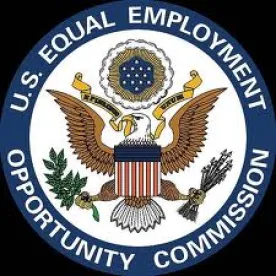The EEOC is seeking public comment on proposed enforcement guidance addressing unlawful workplace harassment under the federal anti-discrimination laws enforced by the agency – namely, Title VII of the Civil Rights Act of 1964 (Title VII), the Age Discrimination in Employment Act (ADEA), the Americans with Disabilities Act (ADA) and the Genetic Information Nondiscrimination Act (GINA). If adopted by the EEOC, the enforcement guidance would supersede four existing EEOC guidance documents issued during the 1990s, as well as a section of the EEOC Compliance Manual on harassment.
The proposed enforcement guidance addresses numerous subjects relating to the legal standards applicable to harassment claims based on sex, race, color, religion, national origin, age, disability, and genetic information. The proposed guidance includes discussion of the EEOC’s position on topics including:
- defining protected categories, including, with regard to sex-based harassment, incorporating the categories of sex stereotyping and harassment based on sexual orientation, gender identity, and pregnancy, childbirth or related medical conditions;
- establishing causation, i.e. demonstrating that a complainant was subjected to harassment at least in part because of a protected characteristic;
- defining the scope of hostile work environment claims, including what may qualify as “severe and pervasive” conduct sufficient to give rise to a claim;
- employer liability standards when the alleged harassers are supervisors, non-supervisory employees, alter ego/proxies of the employer, or non-employees;
- systemic harassment and pattern-or-practice claims; and
- “promising practices” for preventing and addressing harassment in the workplace.
The proposed guidance includes specific examples of conduct that, in the EEOC’s view, would and would not constitute unlawful discrimination under the covered laws.
Additionally, the proposed guidance includes citations to court decisions interpreting the covered laws and analyzing how the courts applied the law to specific facts. The EEOC states that the proposed guidance “explains the law on such issues with concrete examples, where the Commission agrees with those interpretations,” and that “[w]here the lower courts have not consistently applied the law or the EEOC’s interpretation of the law differs in some respect, [the] guidance sets forth the Commission’s considered position and explains its analysis.”
The proposed guidance follows up on a report issued in June 2016 by the EEOC’s Select Task Force on the Study of Harassment in the Workplace. Among other things, the June 2016 report urges employers to conduct regular assessments of the workplace to root out evidence of harassment, ensure that comprehensive anti-harassment policies are in place and are clearly communicated to employees, offer regular anti-harassment training (and consider offering additional workplace civility and bystander intervention training), and generally work to promote a workplace culture in which harassment is not tolerated.
Comments on the EEOC’s proposed guidance may be submitted via www.regulations.gov or by mail to Public Input, EEOC, Executive Officer, 131 M Street, N.E., Washington, D.C. 20507.
The deadline for submission of comments is February 9, 2017.




 />i
/>i
